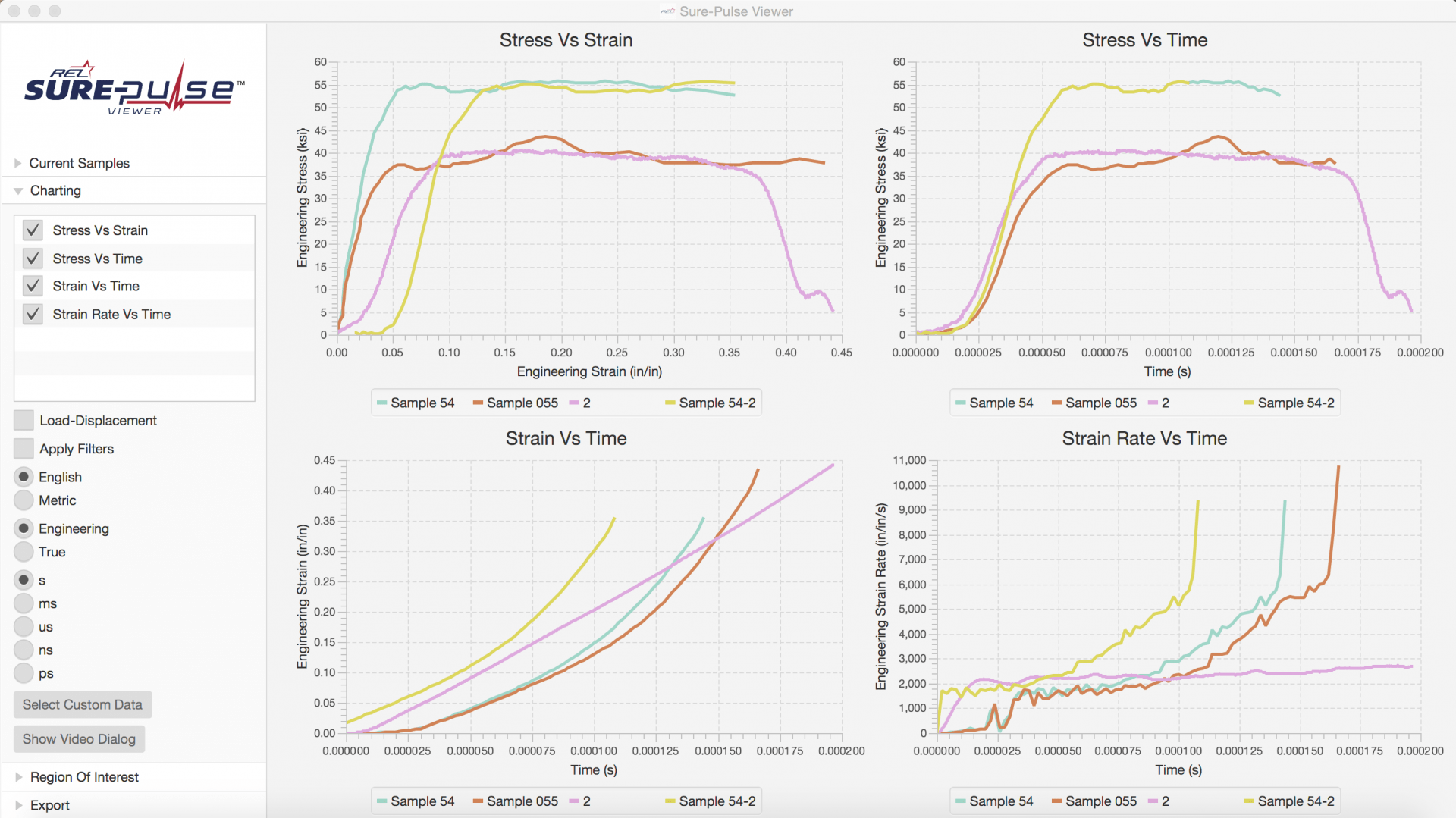
REL Releases Open Source High Strain Rate Testing Software
REL is releasing its SURE-Pulse software suite under the GNU General Public License, version 3.0 (GPL-3.0).
SURE-Pulse was originally written to be a high throughput testing software to handle REL’s in-house high strain rate testing with their Split Hopkinson Pressure Bar system. Due to its cross platform, non-proprietary and open source nature, REL hopes that SURE-Pulse will become the standard method of calculating test analysis in high strain rate testing. REL is seeking engagement in the SURE-Pulse project from the academic community to standardize and increase transparency of high strain rate calculations.
The software integrates data processing, data analysis, and image processing into a single software suite. It is built to be compatible with a wide variety of data formats to maximize compatibility with other data acquisition systems. Though the software was built to handle high strain rate testing, it has the ability to process any material testing result. The software is written to minimize the work needed to add new sample configurations and calculations.
Current data processing features include low-pass filtering, automatic pulse selection, and saved test configurations. The image correlation package includes a simple interface to run the C++ version of Ncorr (http://ncorr.com). The data viewer package includes useful data visualization for overlaying multiple sample result curves, and a tool visualize how video analysis corresponds with sample data. The software uses portable workspaces, which can be shared between different users. This should allow easy sharing of results.
REL is encouraging the community to suggest and collaborate on new feature adds to the SURE-Pulse software suite. There is already a variety of features that are planned to be added to the suite including Pochhammer-Chree dispersion, two and three wave stress analysis, Young’s Modulus correction, feature tracking in sample, and seamless integration with the PicoScope oscilloscope API.


Click Here for more information including source code and latest builds.

